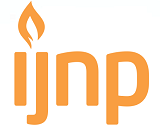Implementation of Pushing Reminder Technique for Women During The First Stage of Labor and Perineal Rupture Events
DOI:
https://doi.org/10.18196/ijnp.v4i2.7514Keywords:
Perineal Rupture, Pushing reminder techniquesAbstract
Background: Rupture of the birth canal or perineal tear cannot be considered a minor injury because it contributes to maternal morbidity and mortality. The perineal rupture causes pain and can increase until the seventh day. Perineal rupture also causes 4-5% of mortality in postpartum mothers.
Objective: The purpose of this study is to find out the effect of pushing reminder technique implementation on women during the first stage of labor and perineal rupture event.
Method: The research method used was pre-experimental with intact group comparison design (post-test only control with 15 control respondents and 15 intervention respondents).
Results: The results showed that the average age of the respondents was 26 years old with status as a housewives (93.3%), and the majority of the educational background was high school graduate (86%). By using the Mann-Whitney test, the results of alpha is <0.05 (0.369), so there is no relationship between the reminder of pushing technique and the occurrence of perineal rupture.
Conclusion: There are other factors that affected the tears of the perineum such as baby’s weight, previous history of perineal rupture, the rigidity of perineal muscles and lack of skills of health care providers to hold the perineum at the moment of baby’s head expulsion, this indicated that is no relationship between the reminder of pushing technique and the occurrence of perineal rupture.
Recommendation: It is adviced for Public Health Care Center is to provide educational media containing information for pregnant woman in a form of electronic media in the waiting room and through education of pregnant women regarding labor and perineum tear so that pregnant women understand the causes of perineal tear.
References
Ardiani, Y. (2015). Hubungan Teknik Meneran Dengan Kejadian Ruptur Perineum. Jurnal STIKes Yarsi Sumbar.
Dinkes. (2013). Profil Kesehatan Indonesia. Jakarta
Hidayat, H. (2013). Faktor-faktor resiko yang mempengaruhi kejadian pendarahan postpartum primer pada ibu bersalin di rsud panembahan senopati bantul diy tahun 2012. Stikes aisyiyah yogyakarta.
Manuaba, I. B. (2009). Gawat Darurat Obstetri Ginekologi & Obstetri Ginekologi Sosial untuk Profesi Bidan.
Manuaba, I. B. (2009). Memahami Kesehatan Reproduksi Wanita.
Mochtar, R. (2012. ). Sinopsis Obstetri Obstetri Fisiologi Obstetri Patologi Jilid 1.
Mujab, R., Purnomo (2016). Pengaruh Tehnik Meneran Terhadap Laserasi Jalan Lahir Pada Ibu Inpartu Primigravida Di Rumah Bersalin Semarang. Pengaruh Tehnik Meneran Terhadap Laserasi Jalan Lahir Pada Ibu Inpartu Primigravida Di Rumah Bersalin Semarang.
Ningsih. (2010). Faktor-faktor yang Berhubungan dengan Kejadian Kelahiran Bayi Prematur. . Faktor-faktor yang Berhubungan dengan Kejadian Kelahiran Bayi Prematur.
Notoatmodjo, S. (2010). Metodologi Penelitian Kesehatan.
Prawirohardjo, S. (2010). Ilmu Kebidanan.
Proverawati, W. (2010). Senam kesehatan.
Rofasari, L. (2009). Hubungan berat badan bayi baru lahir dengan derajat rupture perineum pada persalinan normal dirumah sakit umum daerah kota surakarta. Tesis. Univ. sebelas maret.
Sumarah. (2009). Perawatan Ibu Bersalin.
Wiknjosastro. (2010). Buku Panduan Praktis Pelayanan Kesehatan Maternal dan Neonatal, Edisi 1. Cet. 12.
Zhang, e. a. (2013). Contemporary patterns of spontaneous labor with normal neonatal outcomes. Obstet gynecol. 2010 dec; 116(6): 1281–1287. Obstet gynecol. 2010 dec; 116(6): 1281–1287
Downloads
Additional Files
Published
Issue
Section
License
License
Articles published in the IJNP (Indonesian Journal of Nursing Practices) are licensed under a Attribution 4.0 International (CC BY 4.0) license. You are free to:
- Share — copy and redistribute the material in any medium or format.
- Adapt — remix, transform, and build upon the material for any purpose, even commercially.
This license is acceptable for Free Cultural Works. The licensor cannot revoke these freedoms as long as you follow the license terms. Under the following terms:
Attribution — You must give appropriate credit, provide a link to the license, and indicate if changes were made. You may do so in any reasonable manner, but not in any way that suggests the licensor endorses you or your use.
- No additional restrictions — You may not apply legal terms or technological measures that legally restrict others from doing anything the license permits.
Copyright
Authors who publish with IJNP (Indonesian Journal of Nursing Practices) agree to the following terms:
- Authors retain copyright and grant IJNP (Indonesian Journal of Nursing Practices) the right of first publication with the work simultaneously licensed under an Attribution 4.0 International (CC BY 4.0) that allows others to remix, adapt and build upon the work with an acknowledgment of the work's authorship and of the initial publication in IJNP (Indonesian Journal of Nursing Practices).
- Authors are permitted to copy and redistribute the journal's published version of the work (e.g., post it to an institutional repository or publish it in a book), with an acknowledgment of its initial publication in IJNP (Indonesian Journal of Nursing Practices).














